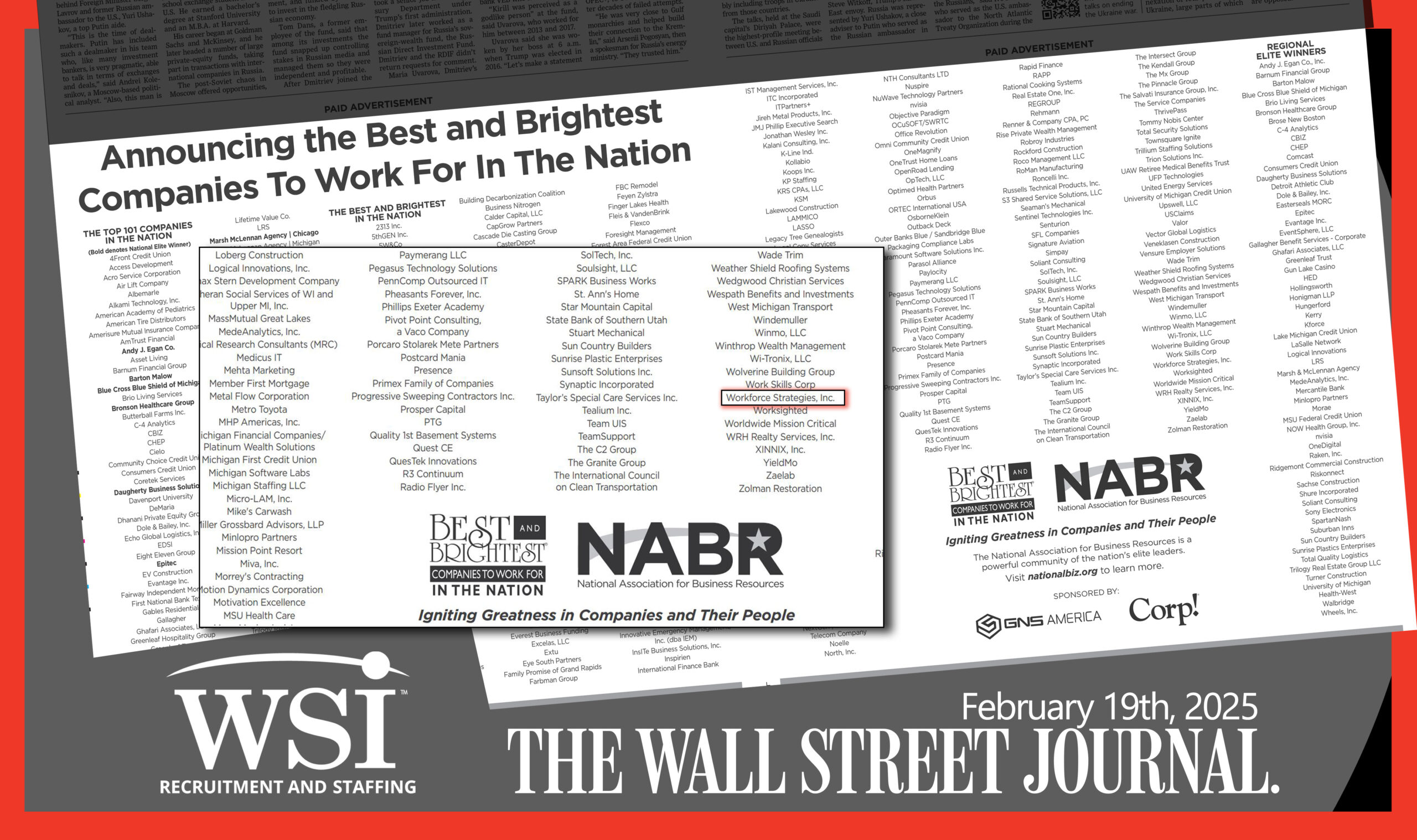Retirement today no longer means a sudden exit at age 65 with nothing on the calendar except golf. Many Gen Xers and younger Boomers view a hard stop as financially unwise and personally unfulfilling. Phased retirement offers an alternative path: a gradual reduction in work hours that combines continued earnings, ongoing benefits and meaningful engagement. This model provides a gentler transition for employees and helps employers retain critical skills.
Continue readingWall Street Journal Recognizes WSI as Best and Brightest Company to Work For in the Nation
At Workforce Strategies Inc. (WSI), we believe that a workplace thrives when its people do. We are honored to be recognized in the Wall Street Journal on February 19, 2025, as one of the Best and Brightest Companies to Work For in the Nation.
Continue readingFeeling The Burn(out)
Your efforts to be fully staffed are being fought on two fronts. The first is trying to fill your open positions. The second is keeping the employees you’ve already hired. With nearly everyone short-staffed, chances are your existing staff is working harder and longer to get the job done. Overworked workers are picking up a lot of the slack and they are suffering from burnout.
According to the World Health Organization, burnout is a syndrome resulting from workplace stress that has not been successfully managed. Companies without systems to support the well-being of their employees have higher turnover, lower productivity, and higher healthcare costs, according to the American Psychological Association (APA). Another study by the APA claims that burned-out employees are 2.6 times as likely to be actively seeking a different job, 63% more likely to take a sick day, and 23% more likely to visit the emergency room. These numbers show burnout is a terrible enemy to your success at work.
A thousand workers were surveyed by Ipsos in early April of 2022 and the studies amplify what many managers already know: this pace of burnout is not sustainable. These charts show what is causing burnout, and what employees think would help alleviate the problem.
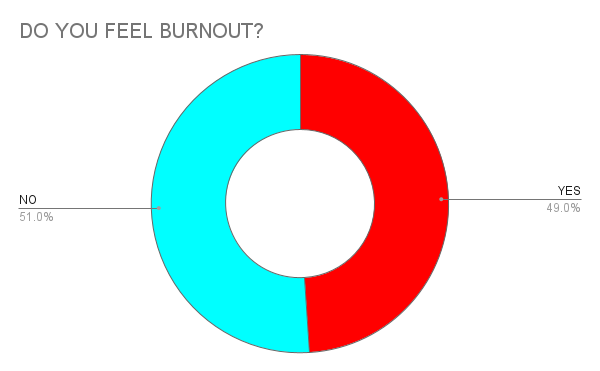
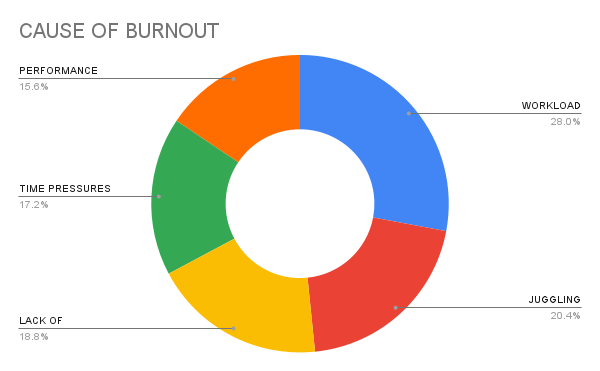

Burnout is being felt most by women with 52% reporting feeling burnt out.. Demographically, the highest number of those suffering from burnout remains among young workers where 53% of those aged 18-34 have started to feel the effects of burnout. These employees are prone to leave their jobs in the next 12 months, a 33% increase from August of 2021.
You get it. Everyone’s exhausted from the last couple of years. Their basic needs aren’t being met and they’re losing balance between work and everyday life. So what can you do? The Ipsos survey asked their respondents “what would help ease your burnout?”
About 70% of those surveyed said that a four-day workweek would help. Flexibility and working from home are also highly sought-after job benefits. Some businesses may be able to offer those to their employees, but many of those benefits would require a logistics reshuffling of epic proportions by most companies. Short of some of these lofty goals, there are a few things you can do right now to try and minimize burnout with your staff.
Extra breaks – Even giving an employee a couple of extra fifteen-minute breaks through the course of a week can go a long way. It shows that you are an empathic employer by giving employees a few extra mental health breaks throughout the week.
Ask the right questions – Start with smaller departments and ask, ‘If I could wave a magic wand and make your jobs easier, what would that look like?” This should help you figure out priorities of what needs to be done first to improve your staff’s workload. Employees shouldn’t be expected to have all the solutions, but they can tell you what is not working, and that can be invaluable. Don’t make assumptions. Have in-person conversations.

Solving Little Problems – Tiny little things that go wrong at work wear people down. One day, there’s coffee in the break room or the vending machine is full and the next day it is not. Burnout happens when presupposed features in our day-to-day work lives are missing or taken away. Maybe the company has spent money on something the employees didn’t ask for or even use. Employees could view such an action as impractical, a waste of money, and a poor reflection of the organization. Satisfaction and dissatisfaction are not on a continuum with one increasing as the other diminishes but are instead independent of each other. It’s important to look at each independently and work to keep the little things running smoothly.
Empathy – If an employee is missing quotas, deadlines aren’t being met, seems to be in a bad mood, or starts coming in late–it all may be signs of burnout. Keep in mind that people can have burnout in their private lives as well. That can carry over into work. Don’t assume that there isn’t burnout just because things aren’t busy at work and don’t take it personally that the work environment is leading to burnout.
Access to Resources – Burnout can cause a lot of health problems, both physical and mental. It’s important to make sure your team is connected to resources. Hopefully, you have wellness programs in place that can help your staff work out burnout issues. You should have a list of external sources that can provide support in mental and physical health. Encourage employees that are feeling burnout to utilize these services.

Take Care of Yourself – If you’re a manager feeling burnout yourself, it can be contagious. Setting a positive example of how to manage burnout can help your team understand how to deal with their own struggles. It’s ok for you to be vulnerable too. Managers are not superhuman. It’s ok to let the team know you feel the same issues as they do. Take a mental health day and let your team know it. Here’s some advice on how to deal with burnout as a manager.
The best way to stop burnout is to get in front of it. Implementing some of these action items and tips along with focusing on keeping workloads balanced can minimize the effects of burnout and create a stronger bond with your staff and improve your company culture.
Best Ways to Earn Extra Cash This Summer
The upper Midwest can be the last to get the memo for spring. Thankfully, we may have seen the last of the snow and can look towards the best time of the year, summer. But all of those things that make summer fun, like vacations and parties, cost money. If your kids are home from school for the summer, child care costs, as well as extra food costs, can get out of control very quickly as you’re trying to work a 40-hour week. If the warmer months put a strain on your budget, there are a few ways to make some extra cash with side hustles.
If you’re working for WSI, hopefully, you’ve got some extra overtime being offered by your assignment which can be very helpful for both you and your employer. The warmer months are a great time to be outside and to earn a little extra cash to pay off debt, save for a major purchase, or take a relaxing vacation with the family. Here are a few side hustles you can explore, or that may spark your imagination for a whole new way to earn extra cash this summer:
UPDATED: May 9th, 2023:
New ideas suggested by social media survey included:
Participate in paid research studies: Many universities, hospitals, and research institutions conduct paid research studies throughout the year. These studies usually involve filling out surveys, testing new products, or participating in clinical trials. You can find these opportunities on websites like ResearchMatch.org or ClinicalTrials.gov . Although not all studies are open to everyone, many are looking for a diverse range of participants.
Freelance services online: If you have a skill that can be offered online, you can make extra money by freelancing on websites such as Upwork, Fiverr, or Freelancer. Examples of freelance services you can offer include writing, graphic design, virtual assistance, social media management, and data entry. You can start with small projects and work your way up as you build your portfolio and reputation.
Start a small online business: There are many online platforms that allow you to start a small business with minimal investment. For instance, you can start a dropshipping business through websites like Shopify or Amazon. You can also consider selling your own digital products, such as e-books, courses, or printables, through platforms like Gumroad or Teachable. Starting an online business can be a great way to generate passive income and build a brand over time. You need a plan, a phone, and a good microphone.
Sports Referee – There are numerous sports and leagues throughout the area who are always on the hunt for umpires and referees. Most will offer free training for soccer, softball, baseball, and more. The best place to check for opportunities is local recreational league social media sites and calling rec league officials. Early spring is a great time to scout for these summer jobs. Many youth softball and baseball games can pay between $25 and $35 per game. It might be a great place to bring your kids out in the evenings to get exercise and play, as many facilities incorporate playground equipment. If you officiated three games a week, that could mean an extra four hundred dollars a month, enough for the family vacation!

Mow Lawns – It’s not the most glamorous gig, but it can be highly profitable as many mowers can earn more than $30 an hour with steady jobs. There will be some investment upfront on your part. Good lawnmowers that can handle the wear and tear of commercial use could cost several hundred dollars. But that cost could be covered in a week or two with steady clientele. Don’t undercharge for your work! Maintenance, gas, and travel can be expensive costs associated with a lawn mowing business. Yard signs, Facebook, and flyers can be a great way to market to your neighborhood.
House Sitting – Dogs and Amazon deliveries…where would housesitters be without them? Housesitting is a fantastic side hustle as it gives homeowners a great relief to know that their home, mail, plants, and plants and animals are being cared for while they vacation or travel. The best thing you can do is start cheap, and get great reviews. To find clients, you can sign up with sites like HouseSitter.com, HouseSittersAmerica.com, and MindMyHouse.com.

Amazon Delivery – A program called Amazon Flex pays people to deliver Amazon packages. Like most delivery jobs, you can set your own schedule and work as little or as much as you need. You can plan your week by reserving blocks in advance or picking them each day based on your availability. Driver delivery rates range from $18 to $25 an hour. Remember the Golden Rule: “Do unto others packages as you would have them do to yours.”
Babysit – The demand for child care never ceases. If you have the ability to work by providing child care for a family, be it in their home or at a daycare or camp, it can be a great way to double your paycheck each week if you can work it on an off-shift from your regular job. Most babysitters are averaging between $13.50 and $16 an hour. With kids home from school all summer and child care centers struggling to find help, many parents are scrambling to find adults to watch their kids this summer. You may even want to offer a full-day, half-day, or weekend rate for repeat clients. Care.com or sittercity.com are reliable sources to find jobs babysitting.
Delivery – Shipt, DoorDash, InstaCart are all shopping and delivery services you can try. If you have a reliable delivery vehicle and a valid license, you’re eligible to deliver groceries and shop for other people’s purchases. The benefits of this are the flexibility and freedom. The downside is gas prices can cut into fees. Plus, these services allow their delivery drivers to be tipped for great customer service.

Create and Sell Homemade Goods – This one requires some groundwork but pays the most rewards in both personal satisfaction, pride, and extra money. Maybe you’re great with yarn or painting the same thing over and over. Everyone has something they’re passionate about. If you can, or have turned your passion into a tangible item, working a little each day to get a storefront on Shopify or Etsy is a side hustle that will reward you in many ways. You can also use Farmer’s Markets to sell homemade food and craft goods. Here’s some guidance to get started.
Purge the Clutter – A summer-long project could earn you extra income each week. We’re all hanging onto lots of things we don’t need. Decluttering your garage, home, or yard can open up your space and stuff your wallet. You can sell your stuff both offline and online. Use Facebook marketplace and eBay to sell your items. Learn how here. You can plan several garage sales throughout the summer. You can also resell thrift store items if you’ve got a flashy eye for style or can repurpose items, which could be a great long-term side hustle.
If you want to lounge away the summer, that is amazing! If you want to use the summer to grab a little extra cash, we hope any or all of these ideas create some motivation for you to earn what you need to have a little summer fun. Either way, enjoy the warmer temperatures coming our way.
Five Ways to Speed Up Your Hiring Process
Ten days. That’s how fast you, as an employer, have to hire for a position if you want to catch the top talent in your industry. Of course, there is a fine line between making the process streamlined and efficient, and rushing through only to make a bad hire.
Most companies’ hiring process takes 27 days on the low end and up to 90 days on the high end. This is set up through the traditional process of advertising a position, reviewing candidates who fit the description, and then the interview process begins. It’s usually an initial phone interview, followed by one or two in-person interviews, a review internally of final candidates, making an offer, the candidate making a counteroffer, and finally—hiring your ‘perfect’ candidate. Imagine going through all of that only to lose the candidate in their first year, or even worse, find no one to fill the position at all.
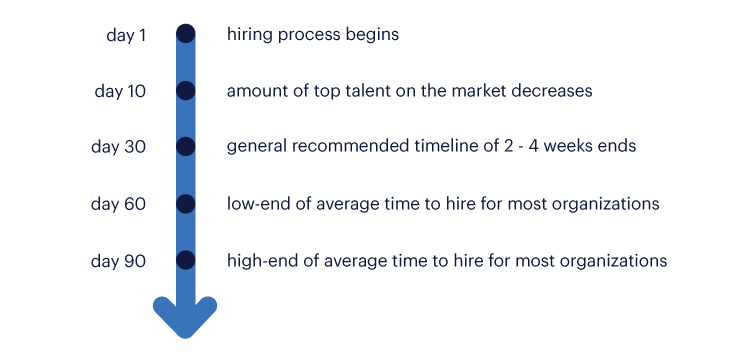
Google has begun pivoting towards a faster hiring process. They realized that after working so hard to optimize the hiring process, they had too many steps in the interview process, and therefore brought the number down to four steps. This includes multiple on-site interviews of a candidate in a single day by different teams back-to-back. Hubspot makes every new hire suggest a way to improve the hiring process.
Speeding up your interview process will help draw in the best candidates, ease your staff’s burden of carrying the load, and increase your operation’s overall productivity. Here is our countdown of the top five ways you can speed up the process in your business.
5. Pay attention to red flags. You can reduce the numbers of resumes you’re searching through and candidates who might not fit your work culture by following your instincts when it comes to the ‘red flags’. The basic things like showing up late to the interview, dressing inappropriately, talking too much, offering vague or non-responsive answers, coming off as arrogant, combative, or defensive are all signs that your candidate may not be a great fit.
Conversely, it’s good to ignore some outdated flags, like gaps in work history due to COVID or other life circumstances. Right now is also a time to cut candidates some slack about their tenure at previous positions as so many people have moved around in the last couple of years during The Great Resignation. You might be the opportunity they have been looking for! This is especially true in manufacturing where wage increases have been a huge motivating factor for employees to switch jobs, sometimes more than once.
Another traditional red flag that we now disregard at WSI is the presence of THC in our drug screening process for applicants. Most of our clients in Michigan, where recreational marijuana is legal, have continued to find success in hiring great associates by eliminating THC from the drug screen. However, we will screen for it up request from our clients. And remember, in states like Indiana, where we also operate, marijuana is illegal.
4. Make a plan before there is an opening. One of the sayings we have here at WSI is “Nobody plans to fail.” If you take the time to come up with a comprehensive workforce hiring strategy early, it could drastically cut down on how long your hiring cycle is. Some best practice recommendations include assigning dedicated resources on your HR team to forecast future talent needs and to have a strategy for how you will attract ideal candidates for the open positions. Having excellent screening questions in the applicant tracking system can ease the workload for your hiring manager as well as eliminating candidates who are not a fit.
Just because a candidate doesn’t get the job doesn’t mean you should disregard them. Those candidates are key for creating a talent pipeline for your business. Build a database and continue to market to them to strengthen your brand identity. Staying on their radar means they could be likely candidates again in the future and a pool of talent you can turn to immediately.
Once you’ve made a hire, take a moment with your team to evaluate your plan of action and see what you can do to simplify the hiring process.
3. Strengthen your brand identity. Some of the most successful factories and warehouses can fill positions very quickly based on their name and reputation alone. They may not have the highest wages, but their work culture, benefits, and opportunities to grow continually draw a great field of applicants. Reputation matters. Just because someone doesn’t apply for or get hired for a position the first time, doesn’t mean they won’t next time if you continue to show them why you’re an exceptional place to work.
When you decide who you want to hire, make sure to follow up and let those unsuccessful candidates know. This information provides closure on a role and allows them to return to their job search. Staying in contact with interviewed candidates is so rarely done that, even when you are delivering “bad news”, you are still presenting your company in the best light.
For the employees that get the job, the entire experience from A-Z (hiring to onboarding and onward) needs to be seamless so that employees are excited about working for your company right off the bat. They’re more likely to spread the word about how great it is to work for you.

2. Utilize your current staff. Who better to fill a role than someone you know who has the soft skills and has shown the ability to learn and grow with your business? When creating your job descriptions, write a version specifically targeting your current employees, encouraging them to grow within the organization. Be sure your team understands that the search net is being cast far and wide for the best candidates, but they should always apply for positions that they think would be a great fit for them.
Look to your current staff members as your best source of referrals. Most people tend to hang out with people who are a lot like them. So if you’re comfortable with the demeanor of an employee, chances are you can find similarly motivated and competent associates just by asking around the warehouse or office. It can also be a great way to motivate the staff to ease their own workload by getting someone hired faster.
Former employees can be a great source to fill jobs as well. Rather than looking only at brand-new candidates, your pool of previous workers may already have the experience and qualifications for the roles you need to fill.
Another way to utilize your current staff is to create a development program. Continually cross-train your staff and offer chances to learn about opportunities outside of their daily responsibilities.
1. Hire a staffing agency. It is not self-serving to say that hiring a staffing agency can be the fastest way to fill your openings. If you’re an HR manager or hiring executive and haven’t used a staffing agency because you might be concerned with costs, you should realize that any costs are more than offset by the increase in quality candidates and a reduced timeline for hiring.
WSI has a pool of qualified candidates and is constantly looking for the best in class talent. We work closely with our clients to understand specifics of a role and we accurately portray that to qualified candidates. We do this by sending candidates from our pre-existing talent pool, handling background and drug screens, and utilizing the latest HR software technology to get more qualified applicants.
If you’re ready to speed up your hiring process, contact us by clicking here.
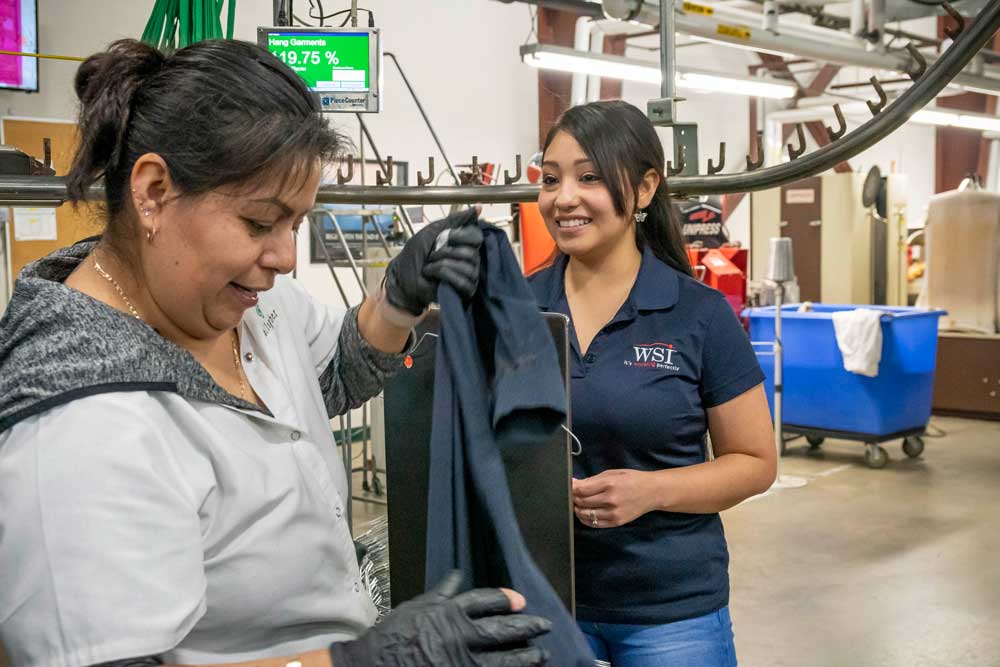
Don’t miss out on the best possible employees for your operation. Be prepared, have a plan, utilize your current employees, and continue to strengthen your brand identity to all applicants for your positions. The best candidates are looking…but not for very long.
12 Ways to Stretch Your Fuel Dollar
For many people, getting to work can be the most difficult thing to accomplish each day. If you don’t have a car, or a consistent ride to work, it can be devastating to your ability to get ahead in life.
Continue readingIs The Great Resignation Over?
Projections for the 2022 unemployment rate are holding steady and experts predict we will be back at pre-pandemic employment levels by midsummer. Better than expected job growth is showing signs the labor market is doing well so far in March. So we’re asking, is “The Great Resignation” over?
You’ve heard that phrase, “The Great Resignation” nonstop for the last year. Anthony Klotz, an organizational psychologist and professor at Texas A&M University, coined the phrase during an interview with Bloomberg last May to describe the wave of people quitting their jobs due to the ongoing coronavirus pandemic, which led many to re-think where, how and why we work. The movement itself was a repudiation of the status quo.

Americans quit jobs at a record pace during the second half of 2021. About 23% of employees will seek new jobs in 2022, while 9% have already secured a new position, according to a December ResumeBuilder.com poll of 1,250 American workers. Market losses, supply chain issues, high fuel prices, inflation, heartbreaking world affairs, and yes, still Covid-19, mean business growth is stymied for a bit and hiring may slow down sooner than later.
Turnover may be slowing down due to another factor: you. Companies have answered the call to compete for workers by raising wages, improving benefits, and creating a better work culture. Anthony Klotz says this will keep employee turnover from being “completely rampant” in the months ahead.
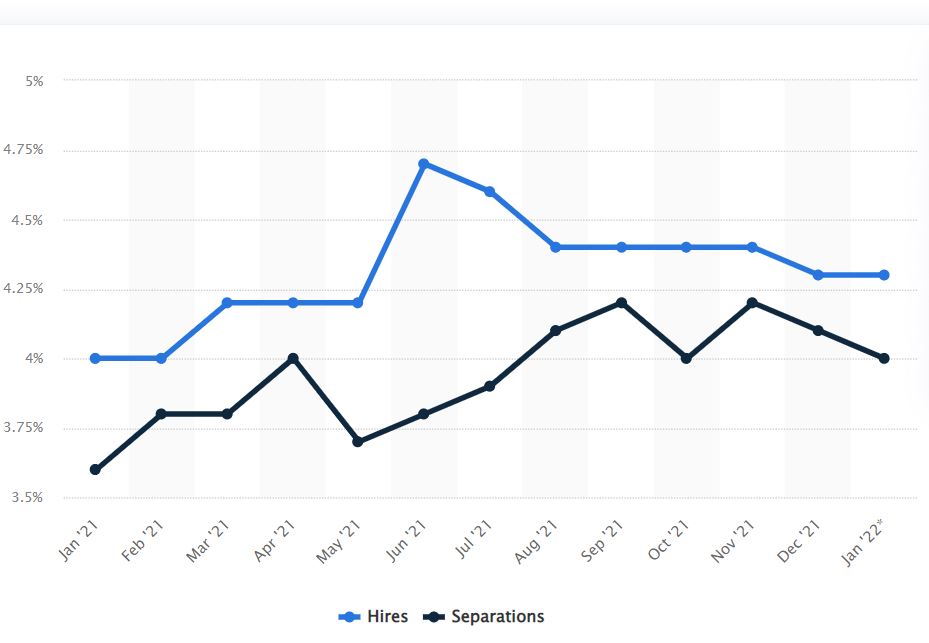
This chart tells an easy story. Hiring was off the charts last spring, and in the months that followed, separations grew to an all-time high. But separations have leveled off, especially in correlation to hires, in consecutive months as we headed into 2022.
A survey by The Muse points to a statistic that a large majority of those who resigned, are regretting their decision. The survey asked about 2500 workers, who identify as Millenial or Gen-Z, and found that roughly seven in ten workers found their new roles were different from what they expected when they interviewed for their current position.
About one in five job seekers even admitted they would quit within a month if it’s not as expected, and 41% say they would give it between two and six months. Just under half of job seekers — 48% — would actually try to get their old job back, according to the data. Older generations might have stuck with a job a couple of years to avoid seeming unstable, but now 80% of Gen-Z said it’s acceptable to leave a new job before six months if it doesn’t live up to your expectations. The Muse CEO, Kathryn Minshew calls this quick turnaround in a job Shift-Shock.
The above chart breaks down quit rates by age.The gold and blue lines represent Gen-Z. Green is Millenial and Gen-X. The yellow line represents Baby-Boomers. Is it over? Was it hype? No and no. The worst may be behind us, but if 80% of Gen-Z say it’s ok to dump out of a job from the get-go, we might be seeing another surge of The Great Resignation later this year.
Now is the time to keep your employees energized and engaged in your operation. Minshew advises, “Companies need to be more upfront about the reality of their jobs because it could help retain workers who aren’t totally satisfied but could be over time. People are much more likely to accept the good and the bad and to show up as engaged and productive if they have entered the situation with their eyes wide open,” she said.
Some simple ways to keep your new employees engaged:
- Social Functions
- Stay Interviews
- Work Perks
- Flexibility over their own schedule
- Improve any toxic-related areas of work culture
- Evaluate managers who will be dealing with new employees directly
The Society of Human Resource Management suggests employees who experience shift shock are less likely to be engaged or to become high performers. So, ask new employees on a regular basis how they are doing in their new position. Ask, “What’s your favorite and least favorite thing about working here?” Let them be transparent and open. Ask them to keep a work diary if you feel it could give the hiring team some insight as to what the job is versus how it was described to the employee.

As we return to a version of normal, try to have in-person interviews. It allows potential employees to walk into the building and see what they’re getting into so they get a feel of the energy and culture of your operation. Also, during interviews, don’t let your HR Managers talk only about the upsides of a job. The more transparent you are, the more new employees will be able to deal with adversity and have their expectations managed.
Do not show any resentment for paying higher salaries. Inflation is hard on everyone, and it may seem like you’re paying more for less than you used to get. Employees can see when an employer doesn’t think they’re earning their paycheck. If that happens, they’re likely out the door sooner than later. Give new employees time to acclimate and grow into their roles.
The numbers show The Great Resignation was real and is winding down. Now is an opportunity to soften the landing for those who participated and prevent a second wave of shift-shock that could happen later in the year.
Careers In Less Than A Year
If you’re looking for ways to expand your skill set and grow in your manufacturing career, many of WSI’s assignments offer opportunities for growth. From GED courses to career development courses, the more you invest in a company with your time, the more they invest in you.
If you’re looking for new opportunities, there are several jobs and trades you can learn in a very short amount of time. These skills don’t take thousands of dollars and years of study. Most can be accomplished within a year.

HVAC Technician
Job: HVAC techs install, repair, and maintain heating and cooling units for commercial and home use. The Bureau of Labor Statistics projects that the jobs in this sector will grow by 4% by 2029. In as little as six months, you can complete HVAC training and begin working in this industry. There’s a lot of great benefits to join.
Training: HVAC training is fast, normally taking between 6 months to 1 year to complete a certificate or diploma program. Associate degrees in HVAC technology take a little longer to earn but earning one may get you a higher paying entry level job. HVAC technicians get extensive in-job training, especially when they are at entry-level.
Annual Avg Salary: Ziprecruiter says the average annual pay for an Entry Level HVAC Technician Job in the US is $35,322 a year.

IT Cable Installer
Job: Network cabling specialists set up and repair low-voltage communication systems. They install and service the lines that support Internet, telephone, cable television, security systems, and satellite television services for a building.
Training: There’s a lot of specialized online courses to choose from. This is one of the fastest trades to train for. You can find network cabling programs that are only 24 weeks long.
Annual Avg Salary: Salary.com states that the average hourly wage for a Network Cable Installer in the United States is $27 as of February 25, 2022, but the salary range typically falls between $24 and $32.

Welding
Job: With your certification or associates degree in welding, you will qualify for a wide variety of welding related jobs in manufacturing, automation, construction, inspection and maintenance industries.
Training: Welding training ranges between 7 months and 2 years of hands-on instruction, depending on the program you choose. Usually there are no prerequisites and you’ll be in demand upon graduation. Grand Rapids Community College has a program that provides all the training and certifications you need to get started and at low cost. There are many more just like in this program in close proximity to most cities.
Annual Avg Salary: According to Salary.com, the average Welder I salary in the United States is $42,996 as of February 25, 2022, but the range typically falls between $38,185 and $49,422. Salary ranges can vary widely depending on many important factors, including education, certifications, additional skills, the number of years you have spent in your profession.

Forklift
Job: If you’re looking for a quick skill to add to give you more opportunities in manufacturing, getting your forklift certification is quick, cost effective, and will have you ready to move whatever needs to be moved on the floor in no time.
Training: You can earn your forklift operator certification by taking an OSHA-approved course either in person or online. Many people choose to attend training in person through a vocational school or a local company. These low cost courses include classroom work, a written test and hands-on training and evaluation.
Annual Avg Salary: The average salary for a forklift operator is $16.31 per hour in Michigan and $5,250 overtime per year. That works out to about $40,000 a year.

Automotive Technology
Job: With an automotive technical certificate, students can prepare for employment as an automotive service technician in various settings such as automobile dealerships, independent service facilities, franchised repair facilities, and specialty shops.
Training: Here’s a one-year program for example, offered by Southwestern Michigan College.
You’ll train to be a certified, full-service mechanic with an automotive degree or certificate.
Annual Avg Salary: Automotive dealerships usually have a very robust benefits package in addition to rising pay. The average annual hourly wage was $24 an hour for entry level technicians. And of course, you’ll be invested in constantly for updated training by your employer.

CDL Truck Driver
Job: CDL truck drivers are the lifeblood of the economy. Companies are working with legislatures to ease the burden on truckers. Perhaps even paying them by the hour instead of the mile.
Training: If you’re willing to take a full-time training course that runs 5 days a week, you can obtain your license and be ready for a trucking job in as few as 3-6 weeks. The duration of your CDL program is not measured in days, but rather by hours of training. So the pace may differ depending on class schedules, and your own. You can get an CDL at age 18, but companies won’t hire you until you’re 21 and able to cross state lines and carry all types of cargo. Here’s a list of steps to take to obtain your professional CDL license.
Annual Average Salary: The average hourly wage for a Truck Driver – Heavy in the United States is $22 according to salary.com, but the range typically falls between $20 and $26.
If you’re on assignment with us, our first suggestion if you’re simply looking to add more money to your check is to ask your supervisor what skills would be needed to advance your career, and does the company offer that opportunity? We love to watch our clients grow with dedicated associates that are a great fit. We also love to see our associates grow and find the careers and opportunities that help them thrive and that they are passionate about. Remember, you’re a year or less away from a whole new trade and a bigger paycheck. In this hot job market, it’s your skills and dependability that set you apart. Good luck!
Why You Should Make Every Day Employee Appreciation Day
Employee Appreciation Day was the brainchild of Bob Nelson, one of Recognition Professionals International’s founding board members. Nelson collaborated with his publishing company, Workman Publishing, to make the holiday appear prominently on workplace calendars starting in 1995. This occasion gives employers and HR Managers a great opportunity to salute and recognize valuable contributions to the team.
Whenever the conversation comes up about Employee Appreciation Day, which is the first Friday of March, someone always says, “Everyday should be Employee Appreciation Day!” It’s a great sentiment, but that’s not an appreciation day, that’s a culture change in your workplace.
With the need to attract and retain talent to meet growing demand, a personal attachment to your employees is critical to culture change. If you’re planning to create a special moment for your employees this year, take this time to condition yourself and your business that you don’t need just one day to do it. Appreciating your employees every day year round is the first step to creating a workplace culture that people want to be a part of.
Some simple ideas that can go along way:
Saying Thank You
The first step in moving beyond just one appreciation day for your staff includes the need to embed recognition into your company culture. Adding recognition for your employee efforts takes the least amount of effort and goes a very long way. Tell someone different everyday how you appreciate their efforts for the company. Not everyone likes to be appreciated the same way. Be sure to ask the person how they like to be recognized. If you want to reward your employees with something other than recognition, we had some non monetary ideas last year during the holidays that employees love.
Make Fridays Special
Friday. It’s the best day of the workweek. Tap into the energy and positivity of your workforce by enhancing their already well-earned mood.
- Giving employees a few extra minutes of a break.
- Having donuts or other food catered for a shift once a quarter.
- Staff Football Pick Em Contests (seasonal)
- Other special employee perks (but not Hawaiian Shirt Day)
Video Message
Take a few minutes a week to record a video from leadership. These messages are universally well-received and have high engagement rates. It is also a useful communication tool with a personal touch.
Educate Them
A 2021 study conducted by Deloitte and the Manufacturing Institute (MI) predicts that 2.1 million manufacturing positions will go unfulfilled by 2030. These empty positions could cost the U.S. a loss of about $1 trillion in GDP.

Source: LinkedIn Learning
Millennials will make up three-quarters of the workforce by 2025. Fifty-six percent of managers say they would take a career enhancement course if it were recommended by their employer. The problem is time. Employees want to learn, they just don’t have the time. The good news is over 90% of companies offer online learning. Millennials look at a job as an opportunity to grown and learn. Take hold of that passion and use it to fill the oncoming skills gap headed to manufacturing. Educate them on the job.
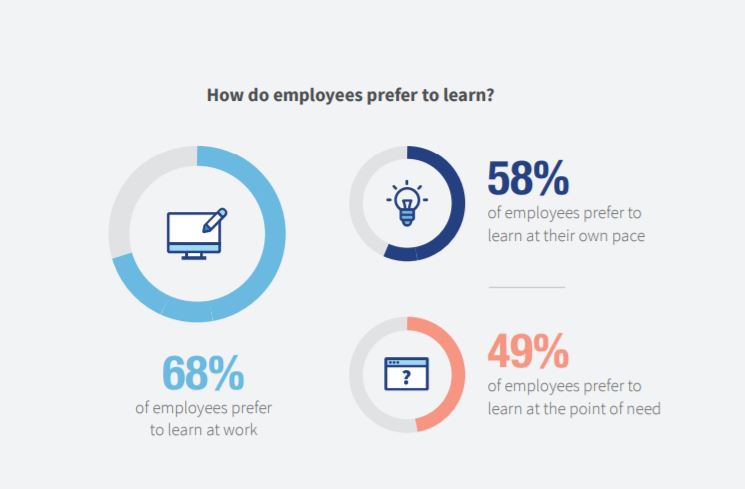
Inclusivity
Employees bring their best each day when they can be their authentic selves while on the job. This means creating a culture of acceptance among your employees, and giving special attention to employees who step up to support efforts to include everyone. Eliminate harassment and bullying if it exists in your workplace. Inclusivity and diversity are among the most sought after qualities in a position amongst millennials and Gen-Z.
If this is the first time you’re hearing of Employee Appreciation Day, now is a good time to learn about how you can celebrate your employees and their contributions to your operation. If your culture needs improvement, take this special day to start a new habit of recognizing great work and celebrating those who give so much to your operation. Then, keep the effort going year round. And next year, the first Friday of March won’t take you by surprise.
Building Your Best Resume For The Future
WSI never requires a resume for an application for employment. Our online application process is very simple to use. But, if you’re looking to build a resume to highlight your qualifications and experience to go for that dream job you’ve always wanted, we’ve put together some tips and information to help you navigate through building a resume. A customized up-to-date resume will let potential employers know what you can do specifically for them. The purpose of a well crafted resume is to get the job interview.
Our internal numbers here at WSI show that about half of our associates have a resume. Of that 50%, our hiring managers report that almost 80% of them are out of date. Again, this doesn’t hinder anyone from getting an interview for a position they’re qualified for. Taking a couple of hours and updating your resume is like having an ace in the hole for when you need it.
Some people say, “If I’m applying online, I just have to input my resume line-by-line anyway.” Yes, some jobs on Indeed.com will take you to an employer’s website where you’ll have to input all the information by hand. This can be infuriating! Thankfully, WSI’s job page has just five fields, and that’s it.
Other openings could have software that scans your resume and fills in the blanks for you. Then there are jobs where you can attach your resume and write a cover letter and push “APPLY NOW” and that’s the end of it. But what happens to your application after you push send?
Applicant Tracking Software
Writing a good resume means making sure your resume has key words and phrases that you see in the job description. Most employers will use software that sorts and ranks resumes based on qualifications set up by the hiring manager. So, it’s important to make tiny changes to every resume you send to match the job description and requirements. It could be the difference whether or not you’re called for an interview. If there are other candidates who’s keywords are a better match, they will rank higher for the job. Here’s an example of a job opening we have for a position here at WSI, with some keywords highlighted.
Notice how many times “communication” was mentioned? Account Management was also mentioned a couple of times in the job description. These keywords are the skills and talents the employer is looking for. So customize your resume to work in some words and terms you see in the job description.
If you want to see how well your resume stacks up against a job description, use this Simulator. It will scan your resume and the job description you copy over and see how well your resume stacks up against the system.
Best Practices for Creating Resumes
Make sure your headline lets the employer know you meet the requirements of the job description. A summary is how you benefited your previous employer. For example, if you worked at a restaurant, you might highlight your customer service experience. A solid headline and summary example would be:
Headline: Customer success professional with 2+ years experience delighting clients in the retail industry.
Summary: Experienced in resolving client concerns via chat, email and phone; routinely recognized by management and peers for assertive and enthusiastic spirit. Excited to continue my career in eCommerce.
Keep your formatting simple.
Be aware that the software may struggle to read and parse the correct information from your resume and misplace your skills and details that you want to put front and center. Don’t use headers, columns, or footers when you create the document.
Here’s the rundown for sections on your resume:
- Name and contact information
- Summary or objective
- Professional history (Company name | Dates of tenure |Description of role and achievements)
- Education
- Skills
- Optional (Awards & Achievements, Hobbies & Interests)
This template is an example Indeed uses for simple formatting.
Be sure to use simple, professional fonts such as Arial, Calibri or Georgia at a 10–12 point font size. In short, keep formatting simple. Make sure each section is labeled clearly:
- Work History
- Work Experience
- Experience
- Professional History
- Professional Experience
Be Honest With Your Skills, Experience, and Education
Aside from creative job titles, if you mash together job ad keywords and your experience in an attempt to make yourself look more impressive, it could very likely backfire. It’s best to be honest with your skills and not embellish your previous roles. Employers want to see how you contributed to the company. When you write your resume, make every effort to highlight these employer benefits.
HR managers are notoriously detail-oriented creatures who do a lot more background work than they are given credit for. If you say you hold a bachelors degree and you don’t, or were a manager at your last job, and you weren’t…that’s going to raise some serious red flags about who you are as a candidate.
If you were a cashier at your last job, say you were a cashier/customer service specialist. No need to over-fancy a title as an attempt to stand out. Being honest, like in any relationship, is the best foundation for success.
Finish Your Efforts With a Well-Crafted Cover Letter
Nothing personalizes your resume like a well crafted cover letter. The key to writing effective cover letters is to succinctly communicate how your professional experience fits the needs of the role and culture of the company. A great cover letter shows the employer you are interested in the job. Some studies are showing that the cover letter isn’t necessary anymore. But employers are still looking for it as part of your application package.
- Don’t use a generic letter.
- Be sure to include the employer’s name, and the position. If you can call to ask who might be in charge of hiring for the position, put their name on the cover letter.
- Your first paragraph should highlight why you are the specific candidate for the job.
Remember, WSI does not require a resume for application. Even if you’re happy in your current role, it’s always good housekeeping to make sure your resume is up-to-date. You’ll want to make it as readily available as possible if you stumble across that position you’ve always dreamed about. If you don’t have a resume, it’s time to put one together so you don’t miss out on great opportunities. If you don’t have access to a computer to craft a resume, start with your local library. You’ll find many librarians are eager to help you navigate how to use the computer. Below is a list of resources you can use to help you in the process. Good luck out there!
More Resume Building Resources
